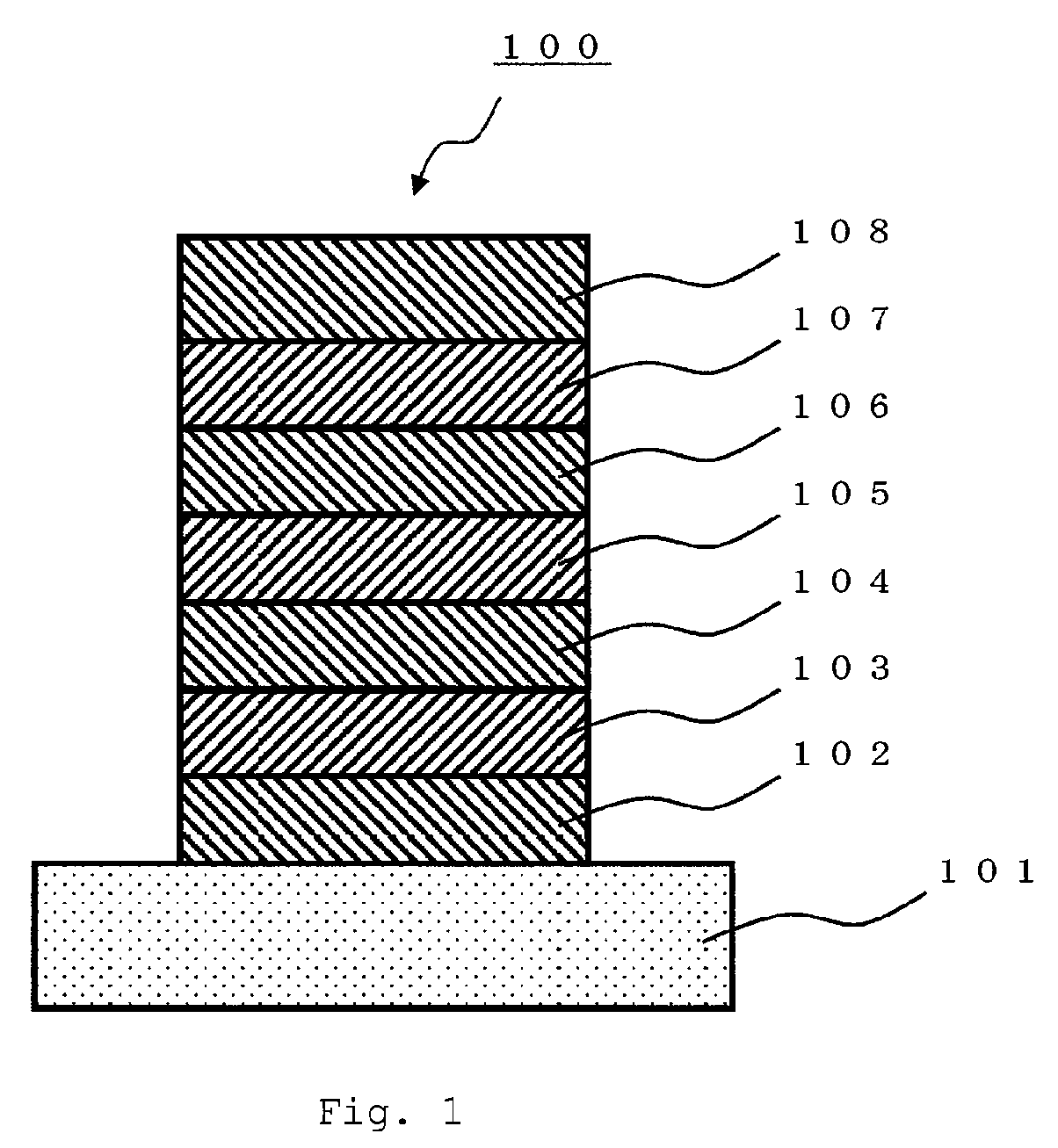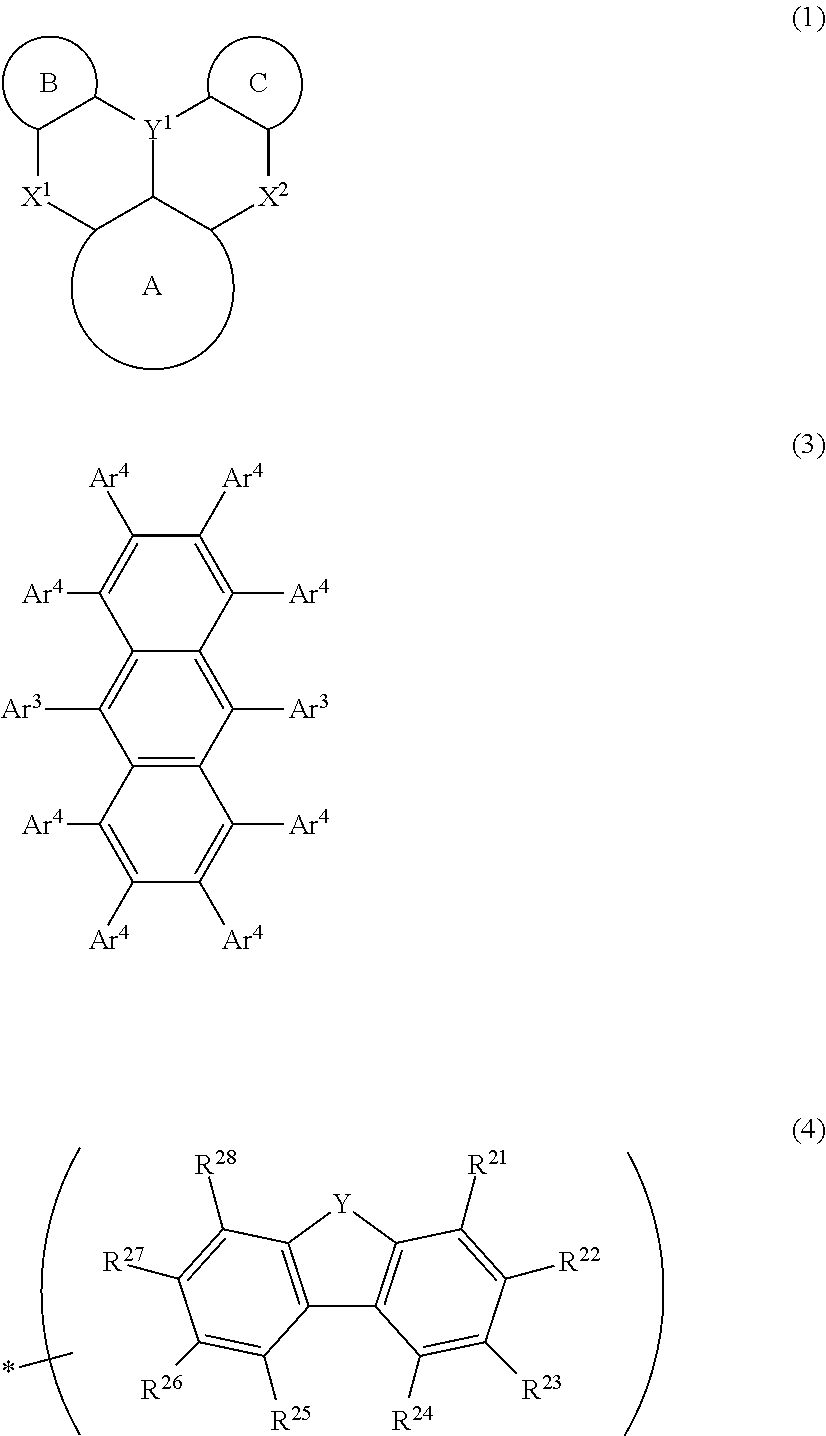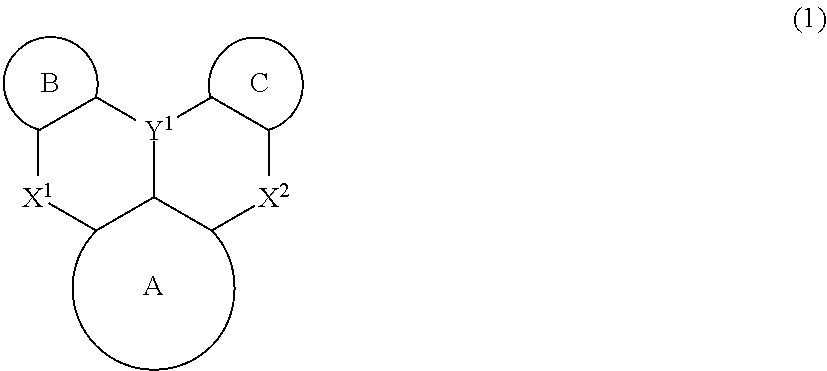Organic electroluminescent element
a technology of electroluminescent elements and organic compounds, applied in the field of organic electroluminescent elements, can solve the problems of no description on a manufacturing method for other materials, and achieve the effects of optimum light emission characteristics, excellent quantum efficiency, and low consumption power
- Summary
- Abstract
- Description
- Claims
- Application Information
AI Technical Summary
Benefits of technology
Problems solved by technology
Method used
Image
Examples
examples
[0360]Hereinafter, the present invention will be described more specifically by way of Examples, but the present invention is not limited thereto. First, synthesis examples of a polycyclic aromatic compound and a multimer thereof will be described below.
Synthesis Example (1)
Synthesis of Compound (1-1152): 9-([1,1′-biphenyl]-4-yl)-5,12-diphenyl-5,9-dihydro-5,9-diaza-13b-boranaphtho[3,2,1-de]anthracene
[0361]
[0362]In a nitrogen atmosphere, a flask containing diphenylamine (37.5 g), 1-bromo-2,3-dichlorobenzene (50.0 g), Pd-132 (Johnson Matthey) (0.8 g), NaOtBu (32.0 g) and xylene (500 ml) was heated and stirred for 4 hours at 80° C., subsequently the temperature of the mixture was increased to 120° C., and the mixture was heated and stirred for three hours. The reaction liquid was cooled to room temperature, subsequently water and ethyl acetate were added thereto, and the mixture was partitioned. Subsequently, purification was performed by silica gel column chromatography (developing li...
synthesis example (
43)
Synthesis of Compound (3-131-N-1): 7,9-diphenyl-5-(10-phenylanthracen-9-yl)-7H-benzo[c]carbazole
[0543]
[0544]Under a nitrogen atmosphere, Pd-132 (Johnson Massey) (49 mg) was added to 7,9-diphenyl-5-(4,4,5,5-tetramethyl-1,3,2-dioxaborolane-2-yl)-7H-benzo[c]carbazole (1.0 g) synthesized by a method equivalent to the method described in paragraphs [0289] and [0290] of WO 2012 / 073541 A, 10-phenyl-9-anthraceneboronic acid (0.77 g), potassium phosphate (1.0 g), xylene (10 mL), t-butanol (3 mL), and water (2 mL), and the resulting mixture was heated and stirred at 110° C. for two hours. The mixture was cooled to room temperature. Thereafter, water and heptane were added thereto and the resulting mixture was stirred for a while, and then the precipitate was filtered. The precipitate was purified by silica gel column chromatography (eluent: toluene / heptane=25 / 75 (volume ratio)) and then recrystallized from toluene to obtain 7,9-diphenyl-5-(10-phenylanthracen-9-yl)-7H-benzo[c]carbazole (1.1...
example 1
[0553]
[0554]A glass substrate (manufactured by Opto Science, Inc.) having a size of 26 mm×28 mm×0.7 mm, which was obtained by forming a film of ITO having a thickness of 180 nm by sputtering, and polishing the ITO film to 150 nm, was used as a transparent supporting substrate. This transparent supporting substrate was fixed to a substrate holder of a commercially available vapor deposition apparatus (manufactured by Choshu Industry Co., Ltd.), and a vapor deposition boat made of molybdenum and containing HI (hole injection layer material), a vapor deposition boat made of molybdenum and containing HAT-CN (hole injection layer material), a vapor deposition boat made of molybdenum and containing HT-1 (hole transport layer material), a vapor deposition boat made of molybdenum and containing HT-2 (hole transport layer material), a vapor deposition boat made of molybdenum and containing compound (3-134-O) (host material), a vapor deposition boat made of molybdenum and containing compound ...
PUM
| Property | Measurement | Unit |
|---|---|---|
| T1 energy | aaaaa | aaaaa |
| thickness | aaaaa | aaaaa |
| thickness | aaaaa | aaaaa |
Abstract
Description
Claims
Application Information
 Login to View More
Login to View More - R&D
- Intellectual Property
- Life Sciences
- Materials
- Tech Scout
- Unparalleled Data Quality
- Higher Quality Content
- 60% Fewer Hallucinations
Browse by: Latest US Patents, China's latest patents, Technical Efficacy Thesaurus, Application Domain, Technology Topic, Popular Technical Reports.
© 2025 PatSnap. All rights reserved.Legal|Privacy policy|Modern Slavery Act Transparency Statement|Sitemap|About US| Contact US: help@patsnap.com



